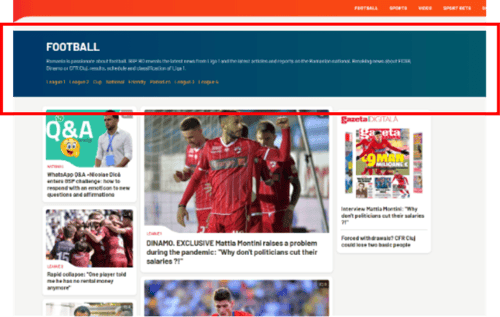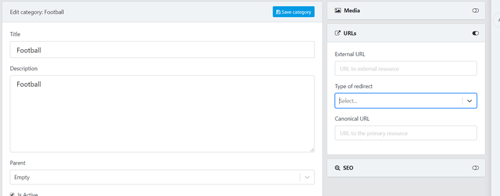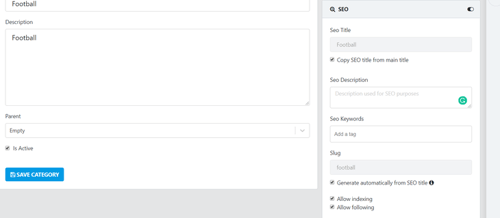Organizing content with Categories
Categories group the content on your site into general topics and make navigation faster.
Categories are your website’s table of content and are mandatory for creating posts with the CMS.
Categories group the content on your site into general topics so that visitors can understand what your website is about and easily find what they are looking for.
Different categories can be arranged under hierarchical trees or they can standalone.
To learn more about creating categories, see How to create a Category.
Note that no default category will be assigned to your posts, you must always enter a category to be able to publish your post.
Category properties
When creating a category, think of the category properties as features that help you optimize for search engines and visually enrich the look of categories on your website.
Category properties work in the same way as we have explained in the overview section, however, they are structured under only three tabs: Media, URLs, and SEO.
Media
The Media tab lets you visually style your category sections the way you like. We give you options to upload pictures, videos, galleries, collages, sliders, and more as headers of your category pages.
It is up to you how category sections will visually appear on your website. The image below is an example of a “Football category” section:

URLs
In the context of categories, the URLs tab is used mainly by CMS Webmasters to tell search engines which categories of your website to index.

External URL
Use External URL if you want to redirect visitors to a place different than the one they have selected. For example, if users select the Football category on your website, they will be redirected to whatever external URL you have entered in the system.
Type of redirect
You can choose from a permanent and temporary type of redirect.
A permanent type of redirect will always send site visitors to the external URL you have entered in the CMS and will tell search engines to index only the page with the external URL.
In contrast, a temporary type of redirect tells search engines that you wish to temporarily direct your visitors to a new page, which shouldn’t be indexed.
Canonical URL
Using a canonical URL is helpful when you have duplicating or similar categories. When you enter a canonical URL, you tell search engines what category page to look at and index.
SEO
The SEO tab lets you optimize your category pages so that they can be indexed by search engines and consequently make your content easily discoverable online.

